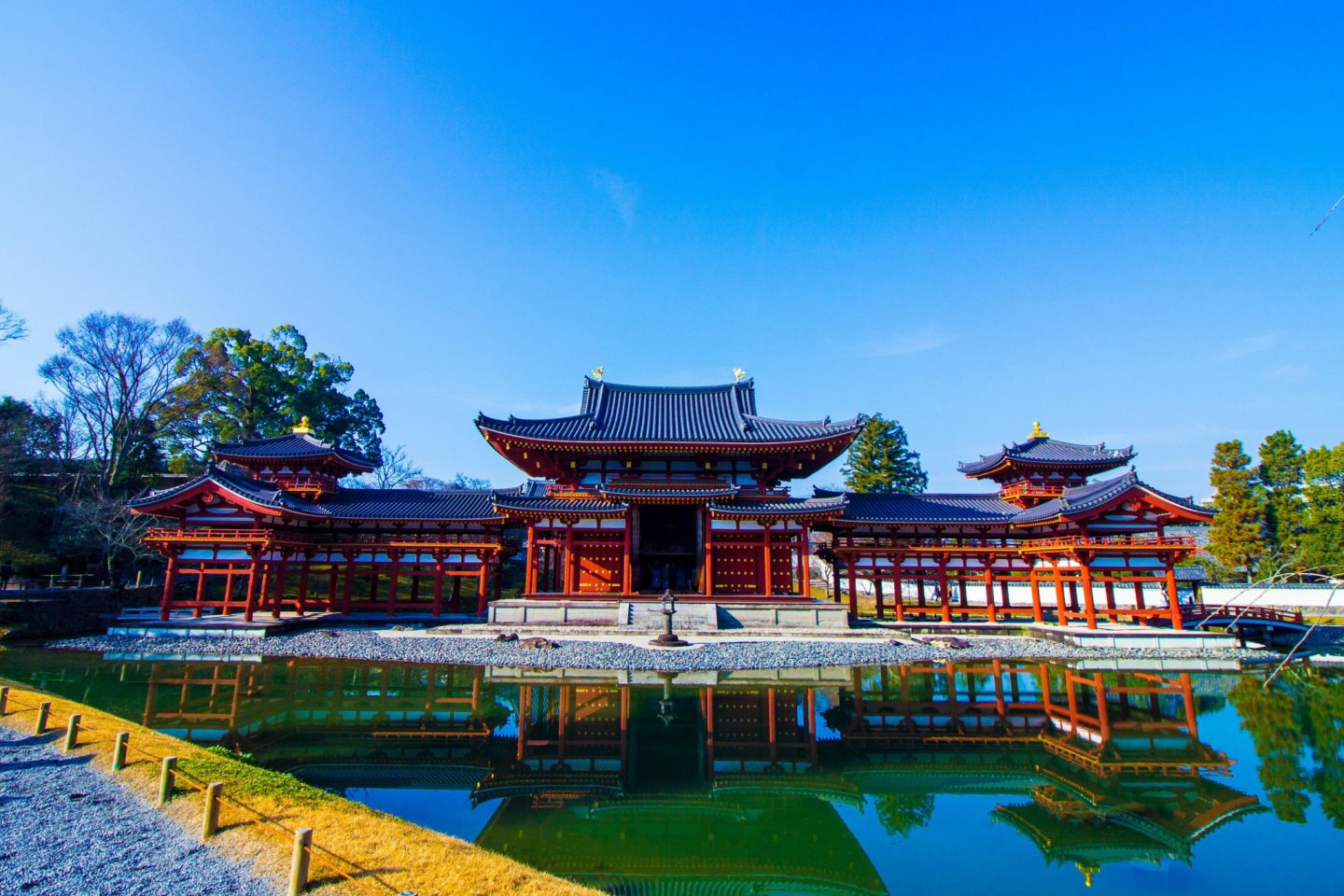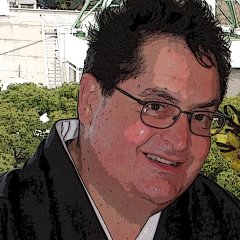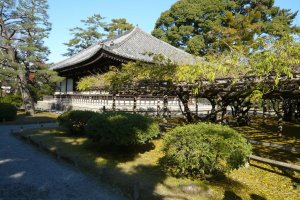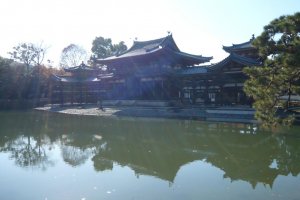The Hō-ō-dō or Phoenix Hall is the main temple of the Byodoin monastery. It is located in Uji which is south of Kyoto. Uji is famous for its green tea, rich history and association with Japan’s first novel, the Tales of Genji.
Phoenix Hall was originally a country palace for the Fujiwara clan. It was converted to a temple by Yorimichi Fujiwara to enshrine the Buddha Amida. Everything inside the Byodoin is the finest among the mid-Heian era's architecture and art, and graceful as a Zuicho (bird of luck).
Originally the building was in the style of shinden-zukuri. Shinden-zukuri was the architectural style of Japanese nobility’s residences. Its main apartment called shinden or bed chamber faced south to bring in sunlight and opened on the pond of a beautiful garden. Shinden-zukuri is landscape architecture. It aims to bring landscape “into” the living area.
Byodoin Temple was established by Kapaku, chief advisor to the Emperor, Fujiwara Yorimichi in 1052. The Phoenix Hall was constructed the following year as the Amidabha Hall (national treasure) to enshrine a statue of Amitabha Tathagata, also a national treasure. The garden, a Pure Land (Jodo) style borrowed landscape garden, has been designated a historic site and a place of scenic beauty. The Suhama (sandy beach), the Hirabashi (flat bridge), the Soribashi (arched bridge), and the Kojima (small island) surround Phoenix Hall.
Byodoin houses numerous cultural assets from the Heian Period: Yamato-e style paintings depicting Amida’s nine grades of descent, the Buddhist Temple Bell, and the pair of Phoenix’s – all national treasures. Of special interest are the 52 statues of Worshiping Bodhisattvas on clouds. These gracefully carved national treasures, the only existing group of Buddhist statues from the 11th century, float on clouds while dancing or playing various musical instruments.
Byodoin was built in order to create a Land of Happiness, in a scenic spot along the river facing the Asahi-yama mountain. The palace features unique architecture which consists of the Chudo (central hall), left and right wing corridors and a tall corridor (the body and wings of the Phoenix). Inside, there is a collection of art from the Pure Land Buddhism from the Heian Period, including a seated statue of Amitabha Tathagata, the only existing Buddhist image confirmed to have been made by Jocho, a sculptor representative of the Heian Period. Phoenix Hall is also home to wall and door paintings depicting Aminda’s nine grades of descent. At present, 26 statues of Worshiping Bodhisattvas on clouds are on display at the Hoshoken museum.
The land of happiness is the place where a person goes in the after-life. Images of the Heian era feature drawings of the land of happiness, with Amida in the middle of a palace style temple with a pond in front. The Jodo style garden was created with this concept. Japanese nobility had power and money at this time so they could build the temple of their dreams in hope of residing there in the after-life. The Jodo sect had a simple teaching, “If you pray to Namuamidabutsu, your life will be renewed in the Land of Happiness.”
On display inside the temple museum is the temple bell. This bell, referred to as the sugata no byodoin, was regarded as one of the three most prized temple bells in Japan during the ancient period. This bell is known for conveying a sense of serenity to the viewer.
Japanese temple bells traditionally include the following four features: a ryûzu, or dragon head sculpture that sits atop of the bell; a tsukiza, or round site at which the bell is struck to produce the best sound; an obi, or decorative sash connecting the ryûzu and tsukiza; and a series of ma, or square, flat surfaces decorated with carvings.
This temple bell is distinguished by the fact that the ryûzu or dragonhead, and the tsukiza, or striking site, are both oriented in the same direction. In addition, every surface of this bell is covered with dense carvings, with the exception of the symmetrical raised dots on the upper portion of the bell. These dots are referred to as chi in Japanese, or nipples.
The patterns on this bell are considered to strike a particularly good balance. If you look closely at the vertical decorations on the bell, you will see a series of representations of phoenixes and heavenly beings playing musical instruments interspersed with lotus-flower and arabesque motifs. Also, on the top row of horizontal decorations is made up of a series of interconnected dragons, which are carved in tiny and meticulous detail.
This is the only bell in Japan to contain such a density of carvings, a feature which is said to resemble ancient Korean bells. At the same time, this bell also contains elements of structural design which are unique to Heian and Kamakura Period temple bells.
Byodoin Temple has been featured on Japanese currency (the 10 yen coin) since 1951.






























